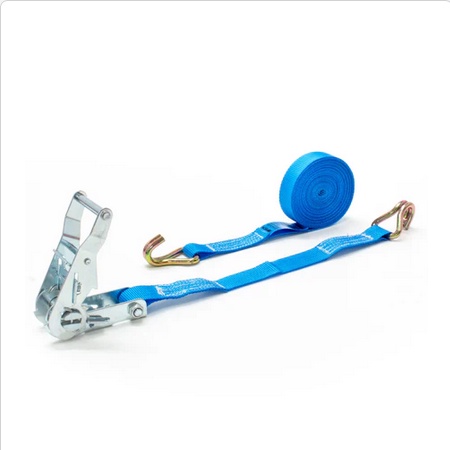Introduction
Moving heavy and bulky items can be a challenging task, whether it's during a residential move, commercial relocation, or in a warehouse setting. Moving straps, also known as lifting straps or shoulder harnesses, are valuable tools designed to make lifting and carrying heavy objects easier and safer. In this comprehensive guide, we will delve into the effective use of moving straps, exploring their benefits, various types, proper techniques, and important considerations for mastering moving tasks.
Understanding Moving Straps
Moving straps are specialized straps or harnesses that are worn by individuals to aid in lifting and carrying heavy objects. They typically consist of durable nylon or polyester webbing and are equipped with handles or loops for gripping. Moving straps are designed to distribute the weight of the load more evenly across the shoulders, back, and legs, reducing strain on the body and allowing for more efficient lifting and carrying.
Benefits of Moving Straps
-
Reduced Strain: By redistributing the weight of the load from the arms and hands to the stronger muscle groups of the legs and core, moving straps help reduce strain and fatigue on the body, minimizing the risk of injury during lifting and carrying tasks.
-
Improved Stability: Moving straps provide a more stable and secure grip on heavy objects, preventing slippage or loss of control during lifting and carrying. This enhances safety and minimizes the risk of accidents or damage to the load or surroundings.
-
Increased Efficiency: With the use of moving straps, individuals can lift and carry heavier objects with less effort and exertion, leading to increased efficiency and productivity in moving tasks. This allows for faster and more streamlined moving operations, whether it's relocating furniture, appliances, or inventory.
-
Versatility: Moving straps are versatile tools that can be used for a wide range of lifting and carrying tasks, from residential moves to commercial relocations, and even in warehouse or retail settings. They can accommodate various shapes and sizes of objects, making them suitable for different types of loads.
Types of Moving Straps
-
Shoulder Harness Straps: Shoulder harness straps consist of padded shoulder straps connected by a length of webbing that wraps around the object to be lifted. They are worn over the shoulders and across the chest and back, allowing the weight of the load to be distributed evenly across the upper body.
-
Forearm Forklift Straps: Forearm forklift straps are designed to be worn around the forearms and shoulders, with adjustable loops that wrap around the object to be lifted. They provide additional leverage and support for lifting and carrying heavy items, such as furniture, appliances, or mattresses.
-
Lifting Sling Straps: Lifting sling straps are adjustable straps with loops or handles at each end that can be attached to the load using hooks or carabiners. They are versatile and can be used for a variety of lifting and rigging applications, including hoisting or suspending heavy objects.
Proper Techniques for Using Moving Straps
-
Preparation: Before lifting, ensure that the load is properly balanced and securely attached to the moving straps. Position the straps under the object, ensuring that they are centered and evenly distributed to provide optimal support.
-
Lifting: Bend at the knees and use your legs to lift the load, keeping your back straight and shoulders aligned with your hips. Engage your core muscles to provide stability and support as you lift the object off the ground.
-
Adjustment: Once the load is lifted, adjust your posture and grip on the moving straps as needed to maintain control and balance. Walk slowly and carefully, taking small steps to avoid tripping or losing your footing.
-
Communication: If lifting with a partner, communicate clearly and coordinate your movements to ensure smooth and efficient lifting and carrying. Use verbal cues or hand signals to indicate when to lift, lower, or change direction.
Important Considerations for Mastering Moving Tasks
-
Weight Limit: Be mindful of the weight limit specified for the moving straps and avoid exceeding it to prevent strain or damage to the straps and potential injury to yourself or others.
-
Proper Fit: Ensure that the moving straps are properly adjusted to fit your body size and shape, with the padded shoulder straps positioned comfortably over your shoulders and the webbing securely wrapped around the load.
-
Clear Pathway: Before lifting, clear any obstacles or tripping hazards from your pathway to prevent accidents or injuries while carrying the load.
-
Teamwork: If lifting heavy or awkwardly shaped objects, consider enlisting the help of a partner to assist with the lifting and carrying. Working together can make moving tasks safer and more manageable.
Conclusion
Moving straps are invaluable tools for lifting and carrying heavy objects safely and efficiently. By redistributing the weight of the load and providing stability and support, moving straps help reduce strain and fatigue on the body, increase productivity, and enhance safety during moving tasks. By understanding the benefits, types, proper techniques, and important considerations for using moving straps, individuals can master moving tasks with confidence and ease, whether it's for a residential move, commercial relocation, or in a warehouse or retail setting.


No comments yet